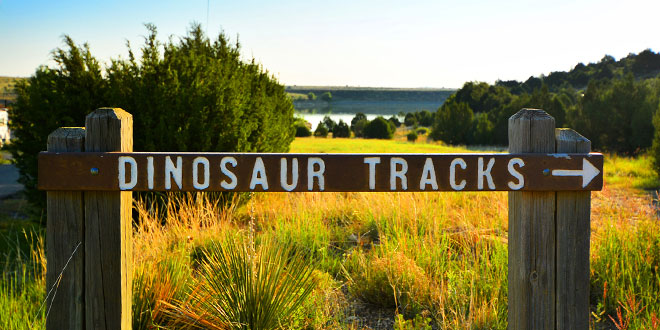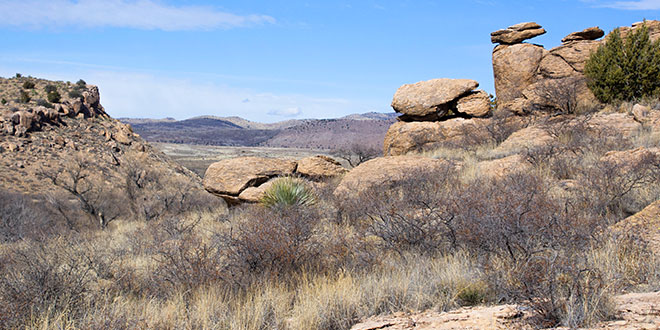New Mexico offers a variety of opportunities to watch wildlife, learn more about our fish hatcheries and visit unique sites that can only be found in our state. Here are four places definitely worth the drive:
River Ranch WMA
In addition, River Ranch is situated on a migratory flyway where all sorts of bird species can be found. This property has a natural beauty inconceivable to those who have a tainted desert impression.
Since its purchase in 2014, the department has been working towards a successful public opening. Earlier this year, a team of young adults volunteering with the AmeriCorps NCCC (National Civilian Community Corps) program helped the department improve and enhance habitat for the benefit of wildlife. The crew spent approximately two months removing fence, clearing brush, removing invasive plant species and building trail, all in the effort to open this property to the public.
The property is now open for non-consumptive recreation— hiking, birdwatching and photography, said Ryan Darr, lands program manager for the New Mexico Department of Game and Fish, adding that hunting and fishing are not permitted yet due to changes needed in the species rules.
“Partnering with the NCCC has resulted in a unique opportunity to accomplish department objectives and simultaneously provide hands-on experience in the natural resource management field,” said Daniel Lusk, southwest regional habitat biologist at the Department of Game and Fish. “Some accomplishments include the removal of two miles of interior pasture fence, the repair of boundary fence, demolition and cleanup of damaged structures, invasive plant treatment and the cleanup of dead and downed trees in Tigner Grove.”
Lisboa Springs Fish Hatchery
The facility has a self-guided tour that includes access to a visitor center and viewing windows for culture troughs and exterior raceways. A show pond is also located near the visitor center where visitors have the opportunity to view and feed large trout.
It is located adjacent to the Pecos River in the southern portion of the Sangre de Cristo Mountain Range approximately 2.5 miles north of the Village of Pecos along state HWY 63. The hatchery occupies approximately 10 acres.
The hatchery is also proud to have partnered up with the Truchas Chapter of Trout Unlimited. Students of all ages (third grade and up) are able to rear trout in class-built aquariums to learn what it takes to rear healthy fish. “Curriculum that is project-based allows for an interdisciplinary approach to learning,” said Kevin Holladay, education coordinator for the department. “This project in particular not only allows for lessons in science, but also in leadership and team building.”
The facility–with its unique recirculation system, drum filters and UV systems–is the only one like it within the state. “It is a very technical and complicated system demanding 24/7 oversight,” said Francina Martinez-Valencia, Lisboa Springs Hatchery Manager, who has been with the department for 11 years. Starting out as a fish culturist back in November 2007, Francina, a Taos native, now works as the first-ever woman hatchery manager for the state.
For information about hatchery hours and directions, please visit http://www.wildlife.state.nm.us/fishing/fish-hatcheries/
Bernardo WMA
In addition to a three-mile self-guided auto tour loop, Bernardo WMA has three platforms for wildlife viewing opportunities. Interpretive signs are at each viewing platform. Auto tour loop and platforms are handicap accessible.
For more information please visit http://www.wildlife.state.nm.us/conservation/state-game-commission-lands/
Clayton Lake State Park
In 2007, the department initiated a programmatic agreement with the State Parks Division whereby the management of Clayton Lake would be under State Parks while still being in the ownership of the New Mexico State Game Commission.
Whether you are planning a weekend getaway or a day out on the lake, Clayton Lake State Park is sure to offer camping, boating, fishing and hiking for visitors of all ages.
“The park is enjoyed by many locals as well as folks from all over the United States and the world,” said Mark Funk, park manager at Clayton Lake, noting that the lake has rainbow trout, channel catfish, bigmouth bass, blue gill and walleye. The lake holds the state record for the walleye catch.

For dinosaur enthusiasts, the park has a unique feature: It is one of only two in the United States which have large numbers of dinosaur tracks, with over 500 tracks on the property. The park has made them an attraction with a walkway around the tracks.
Visitors can also find an observatory located on the west side on the park. The dark skies above are one of the darkest in the United States, perfect for stargazing parties the park occasionally holds throughout the year.
Be sure to pick up your Traveler’s Companion booklet for all.
 New Mexico Wildlife magazine Conserving New Mexico's Wildlife for Future Generations
New Mexico Wildlife magazine Conserving New Mexico's Wildlife for Future Generations
